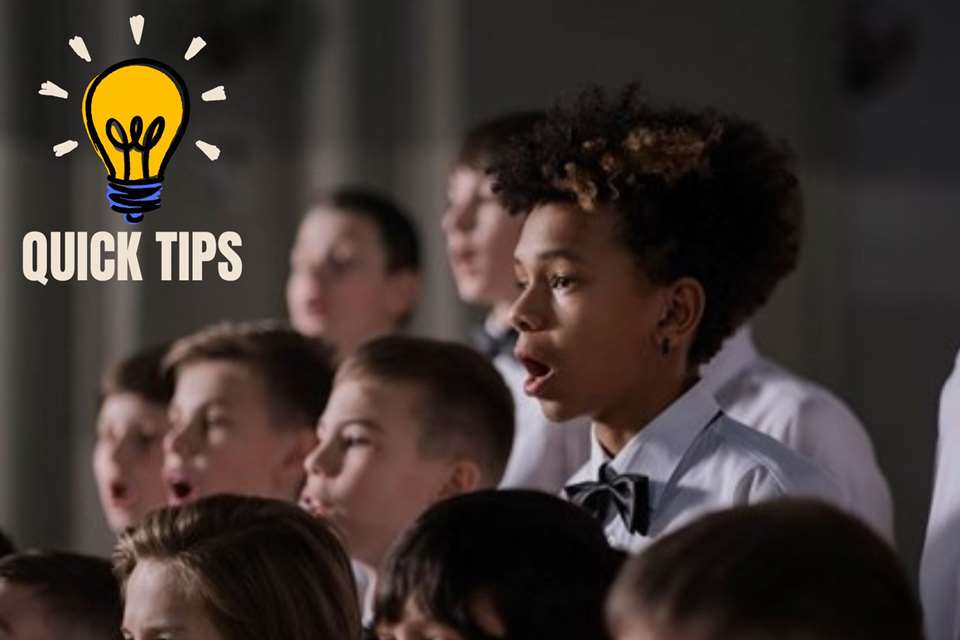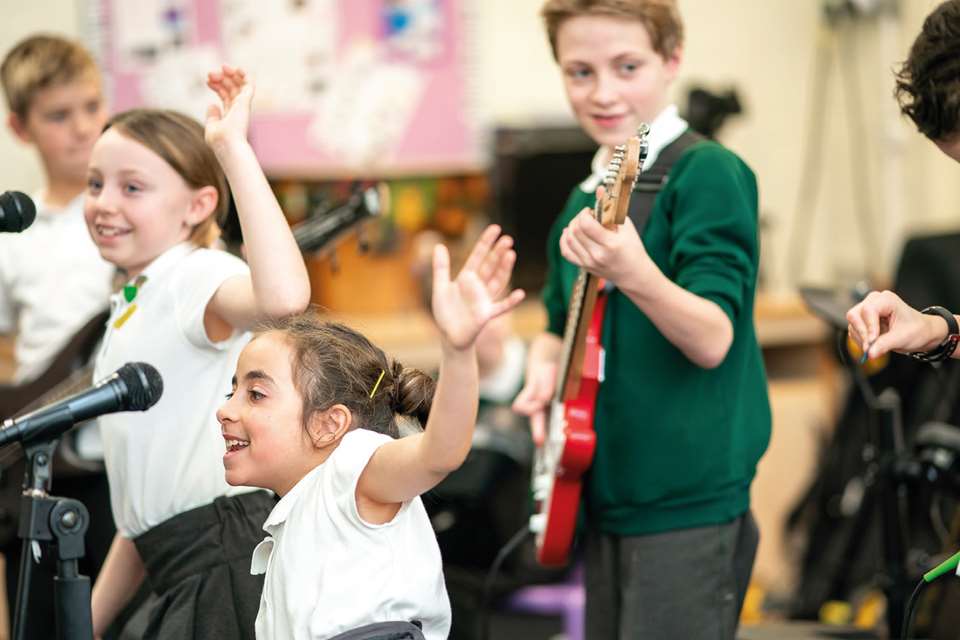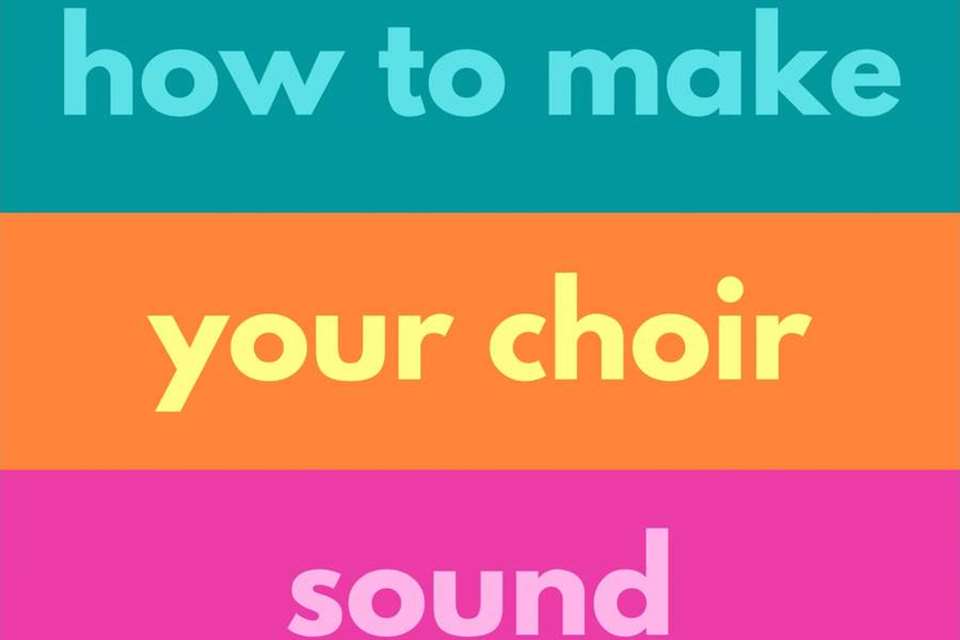Choirs, grooves and learning by ear
Leanne Sedin and Adam Saunders
Friday, March 1, 2024
Is sheet music holding your choir back? Leanne Sedin and Adam Saunders, leaders of the Music Teachers Choir, share their expert tips on how to learn (together) by ear.

Music Teachers Choir
Have you ever had the experience of standing in front of a group of singers only to realise their heads are buried in their scores and not one of them is looking at you? We've all been there. Your requests for them to look up – heaven forbid even to put the scores down and sing from memory – are met with resistance. You hear comments such as ‘How can I sing this music without the notes and lyrics in front of me?’
Once singers are attached to their sheet music, they're reluctant to part with it. But what if you never gave them scores in the first place? What if teaching by ear was actually our go-to approach for working with choirs, not because separating singers from their sheet music is a tricky business, but because it is beneficial for learning, and made more pedagogical sense?
Pedagogical case
Learning by ear is not a new idea, of course. Long before the emergence of musical notation, music was taught and learnt all over the world via the oral tradition, and this continues to be the primary mode of learning folk, gospel, and many other types of music. Many choir leaders will also opt to teach songs by ear as a means of creating inclusive and accessible spaces for singers. Some, understandably, see the need to be able to read music as a barrier to entry, so do away with it completely.
But what if you have a choir of people who can read music? Regardless of music-reading ability, we believe that in many cases teaching by ear is better pedagogically – not only because it deals with the issue of having to wrestle scores away from reluctant singers during rehearsals, but because it embeds (up front) the lyrics, rhythm, harmony and vibe in a way that makes the music sound better in the end.
This is why, in the Music Teachers Choir, we choose to work by ear the majority of the time, despite the fact that many of our singers read music really well. In this context, groove music is our bread and butter, and this is where learning by ear really comes into its own. In fact, working from sheet music can have the opposite effect with this type of music, in some cases even ruining the feel, vibe and performance of the song. (And let's be honest, does anyone actually prefer trying to read heavily-syncopated rhythms from the page rather than listening to these phrases and repeating them back?)
When we do work with sheet music, it will often be after we've worked on a piece by ear first. This way the music serves as a map to a place where the choir has already been; it's not a first foray into uncharted territory. Reading musical notation is an analytical, left-brain activity. If we want our singers in a playful, expressive and creative learning mode from the outset, we need to be working differently in order to get them there. Starting from a place of hearing and embodying music together as a group, rather than with each person focused on their own score, means we have to be more present with one another, more engaged, more open. This can feel like a vulnerable place for some, but some of the best music is made outside the safety of the comfort zone.
This approach is central to The Intelligent Choir methodology taught by Jim Daus Hjernøe at the Royal Academy of Music in Aarhus/Aalborg in Denmark. Through musical play, ear training and improvisation, choirs become more interactive, creative and courageous, with a greater sense of shared responsibility for the musical process.
Sheet music is an amazing tool – a store of musical information that can get a large group of people reading from the same hymn-sheet (perhaps literally, depending on the context) in a short space of time. But it really is just that: a tool. Think of the music as existing among the choir itself, rather than in the dots on the page that the singers must bring to life.
We're not advocating for losing sheet music altogether. It can be so helpful and, for groups who can read, a really useful shortcut, particularly if rehearsal time is tight. However, time spent learning and embodying music away from the notation can be beneficial even if you're planning on giving them the sheet music later.
Practical tips
If you would like to try working by ear with your singers, here are some useful strategies:
Get moving
- The most important aspect of getting a choir to ‘groove’, is to get them moving. It's not about complex dance moves but about feeling and embodying the subdivision of the underlying groove. Get your singers standing up and moving freely.
- Many directors add movement at the end of the learning process; but starting with just moving can greatly help the choir feel the rhythm and style of the piece they are about to learn – right from the get-go.
Chant the lyrics
- Once the choir is moving together, it's time to work on the lyrics. As the leader, chant the words, line by line, using call-and-response. It's even better if you can do this while the choir is still moving.
- Chant the words with the same energy and phrasing you want adopted, and get the choir to copy this in all its detail. Don't settle for them just repeating the lines without the same intensity and commitment. This may take a certain amount of repetition.
- In groove music, the consonants are so important: it's often these sounds that give a song its unique percussive feel, and character. Muscle memory is hugely important here: it's less about storing the lyrics ‘in your head’ and more about getting the words physically into your mouth. Again, repetition is your best friend.
- Resist the urge to give out lyric sheets at this point (undoubtedly some of your singers will start to ask for them). Reading from lyrics (like scores) may seem to speed up the learning process, but this is deeper. Once you've learnt lyrics by ear through repetition, they really stay in.
- Don't feel you have to start at the beginning of a song. You could begin with the chorus. That way, when you later learn the verse, the choir will be heading towards a section that they already know how to sing really well, which feels great.
- Don't be in a rush to get to the tune or harmony. If the choir can move together and chant the lyrics in time, with a fantastic sense of groove and conviction, when you add the melody and harmony later on, it's going to be so much easier.
Sing the tune
- We often start with everyone learning the melody. That way, when we sing in harmony, we have a strong idea of what it is we are harmonising. It also just feels great singing the tune in unison; it's a good way to get into the music.
- Again, do this with call-and-response and use plenty of repetition. It's good practice for a choir leader to model everything. Don't be afraid to sing things back on your own, exactly how you would like them to be sung. Don't feel that you always have to sing when they're repeating back. Listen to them carefully and go over the sections that they haven't quite grasped or which need more detail.
Build harmony gradually
- Once the tune is embedded, layer up the harmony parts one by one. You don't always have to start with the sopranos; mix it up and begin piecing together the harmony. Consider teaching everyone all the parts. Again, this can help get a sense of the arrangement as a whole, and also prevents having singers sitting and waiting.
- Don't be afraid to go back over this process as needed. If, when you add the harmony, the groove slips, go back to moving and chanting. And don't try to do too many things at once; it's ok if things take a while. We repeat: repetition is key!
Final thoughts
This whole process is about getting your choir out of their heads and into their bodies; away from the page and into the room with one another. With this approach, you can elevate your choir rehearsals and aspire to stronger performances built on a solid foundation of rhythm and groove, emotion, and deep connection to the music.
If you're used to working with scores or even lyric sheets, why not have a go at learning something completely by ear? Think of a piece you're working on that could benefit from this approach. Remember: learning by ear is not just for people who can't read music.
The Music Teachers Choir, led by Leanne Sedin and Adam Saunders, is an inclusive community of music teachers and leaders united by their passion for music.







